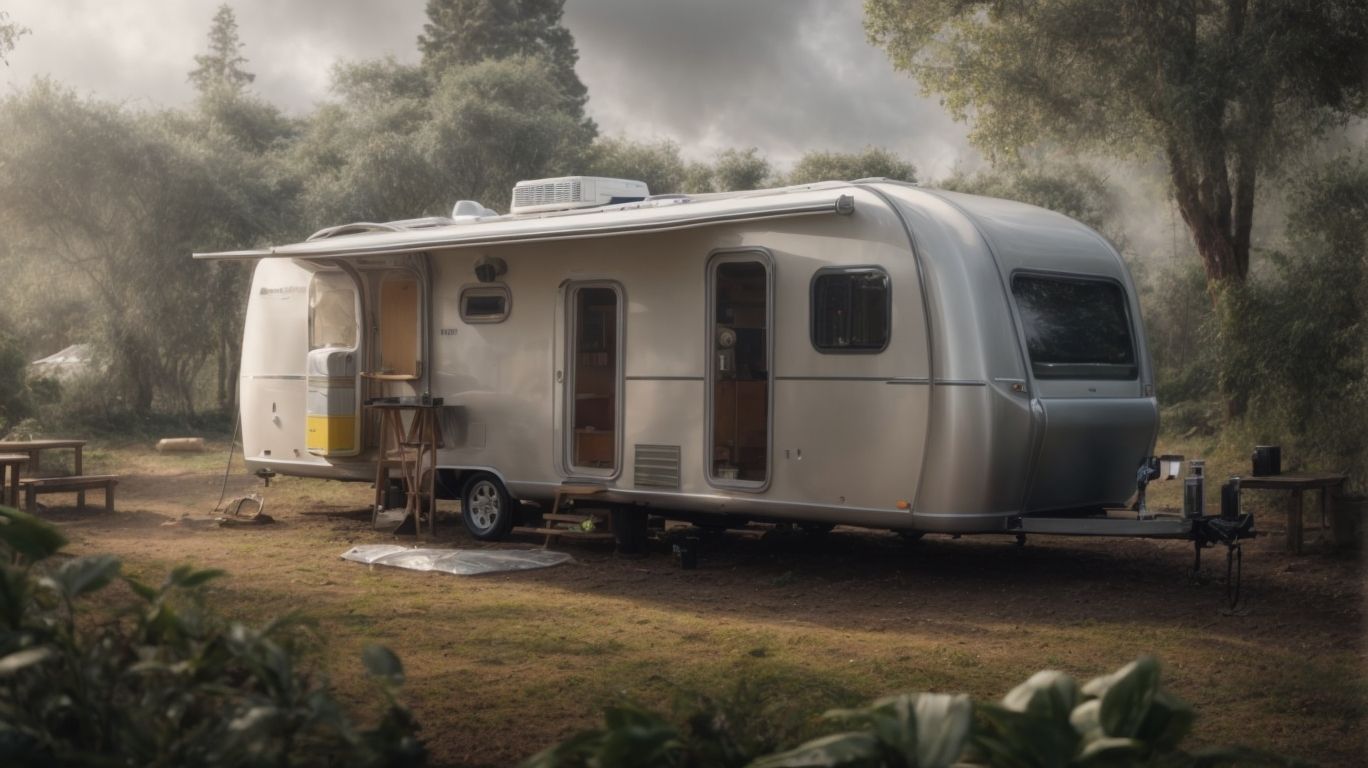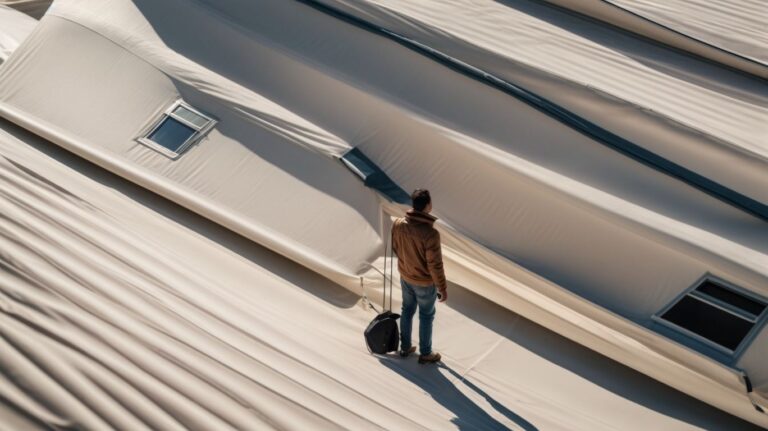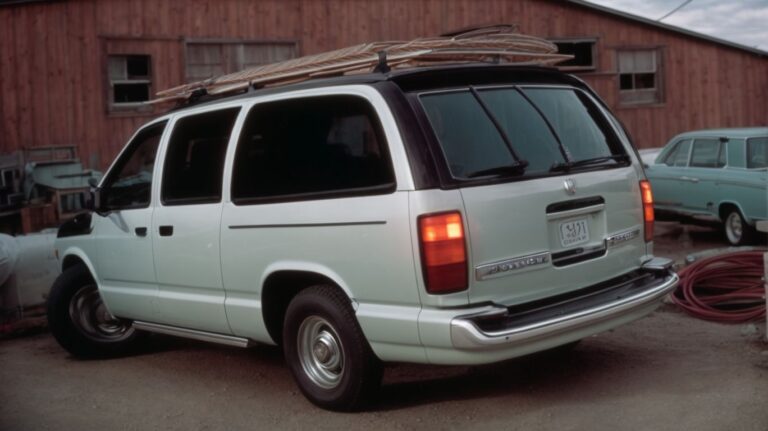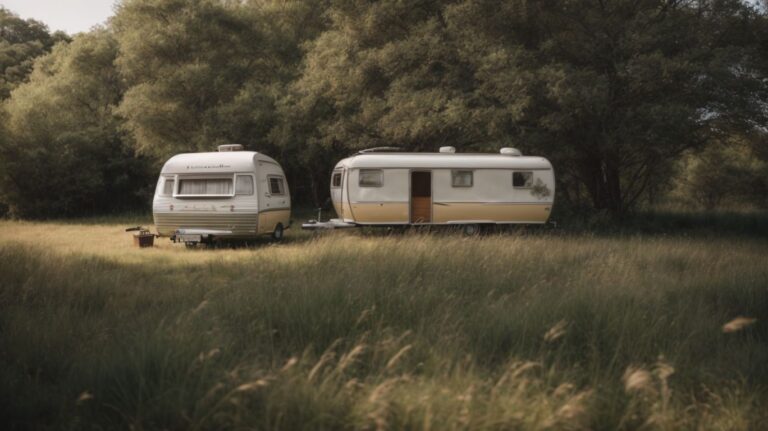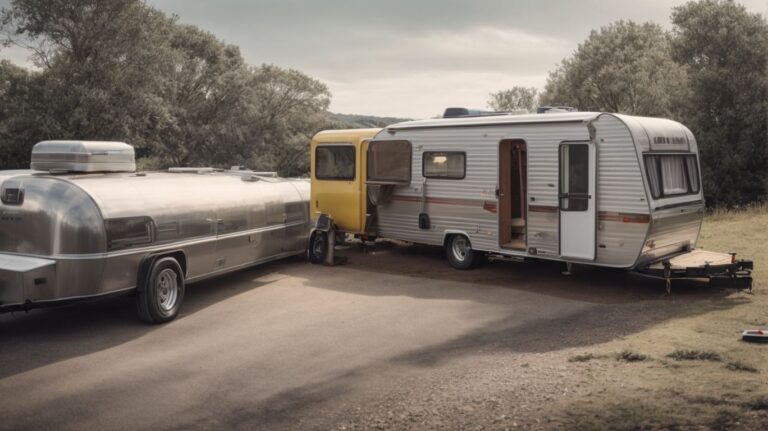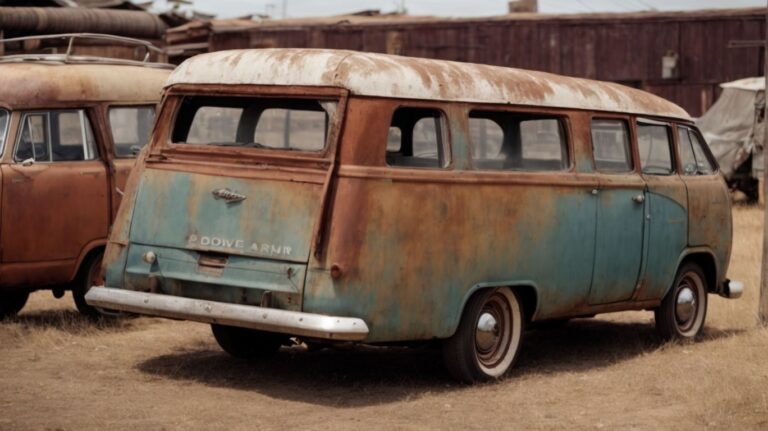Preventing Damp in Caravans: Essential Tips
Are you a proud caravan owner looking to protect your investment?
Damp in caravans can be a common issue that can lead to serious consequences if not addressed promptly.
We discuss the causes, signs, prevention methods, consequences, and solutions for dealing with damp in caravans.
From proper ventilation to identifying and fixing the source of damp, we have got you covered with essential tips to keep your caravan dry and in top condition.
Key Takeaways:
What Causes Damp in Caravans?
Damp in caravans can be caused by various factors such as moisture buildup, condensation, and water ingress through leaks or poorly sealed windows during winter.
Moisture buildup is a common issue in caravans, particularly in areas with high humidity or frequent rainy weather. When the air inside the caravan contains excess moisture, it can lead to dampness settling on surfaces and promoting mold growth.
Condensation, on the other hand, occurs when warm air inside the caravan comes into contact with cooler surfaces, such as windows or walls. This leads to water droplets forming, which can create a damp environment if not properly managed.
Water ingress from leaks in the roof, windows, or doors is another significant contributor to damp in caravans. Even small cracks or gaps can allow rainwater to seep in, leading to damp and potential structural damage.
Motion Activated RV Step Lights, 10 LED Battery Operated Motorhome Motion Sensor led Light Strip, Magnetic Night Light Bar for Motorhome Travel,Travel Trailers, Camper (2 Pack)
- 【Infrared Induction Motion Detection】Motion sensor light on the PIR sensor can detect human movement, 10 feet once your approach is detected, the rv step lights will automatically turn on in the dark, in the absence of detected motion or other light sources, 18 seconds after the automatic shutdown, a large degree of power savings and improved durability.
Camco TST MAX RV Toilet Treatment Drop-INs - Control Unwanted Odors & Break Down Waste and Tissue - Safe Septic Tank Treatment - Orange Scent, 30-Pack (41183)
- Toilet Deodorizer With Reactive Odor-Eliminating Technology: Experience a powerful RV odor eliminator that stops RV black tank odors for up to 7 days. Just (1) toilet drop in treats camper toilets with up to a 40-gallon tank.
THANSTAR Collapsible Dish Drying Rack Portable Dinnerware Drainer Organizer for Kitchen RV Campers Travel Trailer Space Saving Kitchen Storage Tray
- 【Food Grade Material】Made from eco-friendly PP+TPR material that is BPA Free and Food-Grade. The flexible material allows the dish strainers for kitchen counter to collapse flat for easy space-saving and storage, making the most of your kitchen countertop.
Camco RhinoFLEX 20-Ft RV Sewer Hose Kit - Features Clear Elbow Fitting w/Removable 4-in-1 Adapter - Connects to 3” Slip or 3”/3.5”/4” NPT Threaded Sewer Connection (39742)
- Superior RV Tank Dumping: Streamline RV holding tank dumping with Camco’s RhinoFLEX 20' Camper Sewer Hose Kit. Built tough & flexible, this all-inclusive RV septic hose system provides simple & effective tank dumping on your camping adventures.
Camco Tastepure RV Water Filter - New & Advanced RV Inline Water Filter with Flexible Hose Protector - GAC & KDF Water Filter - Made in USA - Camping Essentials for Fresh Drinking Water (40043)
- Advanced 6-Step Filtration Technology: Experience the extraordinary power of Hex-Flow Technology & its remarkable 6-step filtration process. Every layer works together to provide you with water that is exceptionally clean.





What Are the Signs of Damp in Caravans?
Signs of damp in caravans include visible mould or mildew, a musty smell, and potential health risks associated with prolonged exposure to damp conditions.
Regularly inspecting the walls and ceilings for water marks or discolored patches can also point towards water damage. Peeling wallpaper, bubbling paint, or a soggy feel to carpets and upholstery are other signs of excessive moisture presence.
Left unattended, damp conditions can lead to respiratory issues and aggravate pre-existing conditions such as asthma or allergies. In some cases, damp environments foster the growth of harmful bacteria and fungi, which further increase the health hazards for occupants.
How to Prevent Damp in Caravans?
Preventing damp in caravans involves proper ventilation, regular cleaning, use of dehumidifiers, and winterization measures to avoid moisture buildup and condensation.
In terms of ventilation, it’s crucial to ensure that air can circulate freely throughout the caravan. Open windows and vents regularly, even if it’s chilly outside, to allow for airflow. Consider installing ventilation fans in key areas to assist in moisture removal. Cleaning routines should include wiping down surfaces prone to dampness and mold growth, such as the bathroom and kitchen.
Using a dehumidifier can be a game-changer in maintaining the optimal humidity levels inside the caravan. Place it in strategic locations, especially during colder months when condensation is more prevalent.
During winter storage, take extra precautions by thoroughly cleaning and drying the caravan, removing any damp items, and ensuring all windows and doors are sealed tight to prevent drafts and moisture ingress.
Proper Ventilation
Proper ventilation is crucial in preventing damp in caravans as it helps maintain airflow, reduces moisture buildup, and prevents condensation on surfaces.
By allowing fresh air to circulate throughout the caravan, ventilation plays a key role in regulating the moisture levels inside. When moist air is trapped inside without proper airflow, it can lead to mold growth, musty odors, and damage to furniture and textiles. In addition, effective ventilation helps maintain the integrity of seals, ensuring that windows and doors close tightly to prevent leaks during rainy days. Proper airflow also aids in regulating temperature inside the caravan, contributing to the overall comfort and well-being of occupants.
Regular Cleaning and Maintenance
Regular cleaning and maintenance are essential to prevent damp in caravans by removing moisture-trapping debris, mould, and mildew that can contribute to damp problems.





Implementing efficient cleaning practices such as vacuuming upholstery, washing curtains, and wiping down hard surfaces can help eliminate hidden sources of moisture. Airing out the caravan regularly, especially after cooking or showering, can significantly reduce humidity levels and prevent mould growth. It’s crucial to address any leaks promptly and ensure proper ventilation to keep the interior environment dry and well-ventilated. By incorporating these preventive measures into your routine, you can safeguard your caravan against the detrimental effects of dampness and maintain a healthy living space.
Use of Dehumidifiers
Utilizing dehumidifiers in caravans can help control moisture levels, reduce condensation, and prevent damp problems, especially during periods of high humidity or rain.
Electric dehumidifiers play a crucial role in maintaining a healthy indoor environment by extracting excess moisture from the air. By reducing the humidity levels, dehumidifiers effectively deter the formation of condensation on windows, which is not only annoying but can also lead to the growth of mould and mildew.
With their ability to pull in damp air, condense it, and release dry air back into the room, these moisture control products are essential for combating issues caused by excess moisture.
Avoiding Excessive Moisture Inside the Caravan
Avoiding excessive moisture inside the caravan is crucial to prevent damp issues, especially during winter when moisture buildup can occur due to reduced ventilation.
One effective strategy to minimize indoor moisture is to ensure proper ventilation by opening windows periodically, even when temperatures are low. Maintaining a consistent temperature inside the caravan helps to prevent condensation from forming on windows and walls.
Drying wet items promptly after use, such as towels, clothing, or dishes, is essential to prevent moisture from accumulating and leading to dampness. Setting up room dehumidifiers can also help control humidity levels and reduce the risk of mold growth.
Checking for Leaks
Regularly checking for leaks in the caravan is essential to prevent water ingress, which can lead to damp problems and structural damage if left unchecked.
Water leaks can originate from various sources, such as damaged seals, roof penetrations, or plumbing connections. These leaks can introduce moisture into hidden areas, creating ideal conditions for mold growth and decay.
Inspecting the caravan thoroughly for any signs of water intrusion is crucial to maintaining its integrity and longevity. Pay close attention to areas prone to leaks, including around windows, doors, vents, and seams.





By promptly addressing any leaks or weak points, caravan owners can significantly reduce the risk of costly water damage repairs in the future.
Proper Storage and Winterization
Proper storage and winterization of the caravan are essential steps to prevent damp issues during colder months by ensuring seals are intact, air circulation is maintained, and moisture is controlled.
When preparing your caravan for winter storage, one of the key aspects to focus on is checking all the seals around windows, doors, and storage compartments. This is crucial in preventing water from seeping in and causing dampness. Adequate ventilation is another vital factor to consider; leaving small vents open can help air circulate and reduce the risk of condensation. Using moisture absorbers or dehumidifiers inside the caravan can help keep humidity levels under control, further safeguarding your vehicle against winter damp problems.
What Are the Consequences of Damp in Caravans?
Damp in caravans can lead to severe consequences such as structural damage, health risks for occupants, and a decrease in the vehicle’s resale value.
Structural damage from dampness can weaken the caravan’s integrity, compromising its safety on the road and potentially leading to costly repairs. The presence of moisture can create an ideal environment for mold and mildew growth, triggering a variety of health issues for those inside, including respiratory problems, allergies, and skin irritations. The visibility of damp patches and musty odors can significantly reduce the caravan’s appeal and resale value, making it challenging to sell at a desirable price.
Damage to the Structure and Interior
Damp in caravans can cause significant damage to the vehicle’s structure and interior, leading to structural weakening, moisture-related damage, and mould or mildew growth.
Structural weakening is a serious consequence of prolonged dampness in caravans, compromising the integrity of materials such as wood, metal, and insulation. Moisture-related issues, including rust, corrosion, and decay, can impact various components like the chassis, frame, and walls, reducing the overall durability of the caravan.
Preventing dampness is crucial to avoid these debilitating effects. The growth of mould and mildew not only affects the aesthetics of the interior but also poses health risks to occupants, potentially leading to respiratory problems and allergies.
Health Risks for Occupants
Damp in caravans poses health risks for occupants due to exposure to mould, mildew, and the musty smell associated with damp environments, potentially causing respiratory issues and allergies.
Exposure to mold is particularly concerning as it releases spores into the air, which can trigger asthma attacks and worsen existing respiratory conditions. The presence of mildew in a damp caravan can lead to skin irritation and eye discomfort. Inhaling the musty odors from dampness can also result in headaches, dizziness, and general discomfort for individuals spending time inside the caravan.





Decrease in Resale Value
The presence of damp in caravans can lead to a decrease in resale value as prospective buyers may be deterred by visible signs of damp, moisture damage, or musty odors.
When potential buyers come to inspect a caravan, they are often looking for signs of a well-maintained vehicle. Any indication of moisture damage can set off alarm bells and cause them to rethink their purchase decision. Not only does dampness compromise the structural integrity of the caravan, but it also creates unpleasant odors that are hard to conceal. The visible presence of mold or mildew can be a major red flag for buyers, leading them to question the overall condition and level of care the caravan has received.
How to Deal with Damp in Caravans?
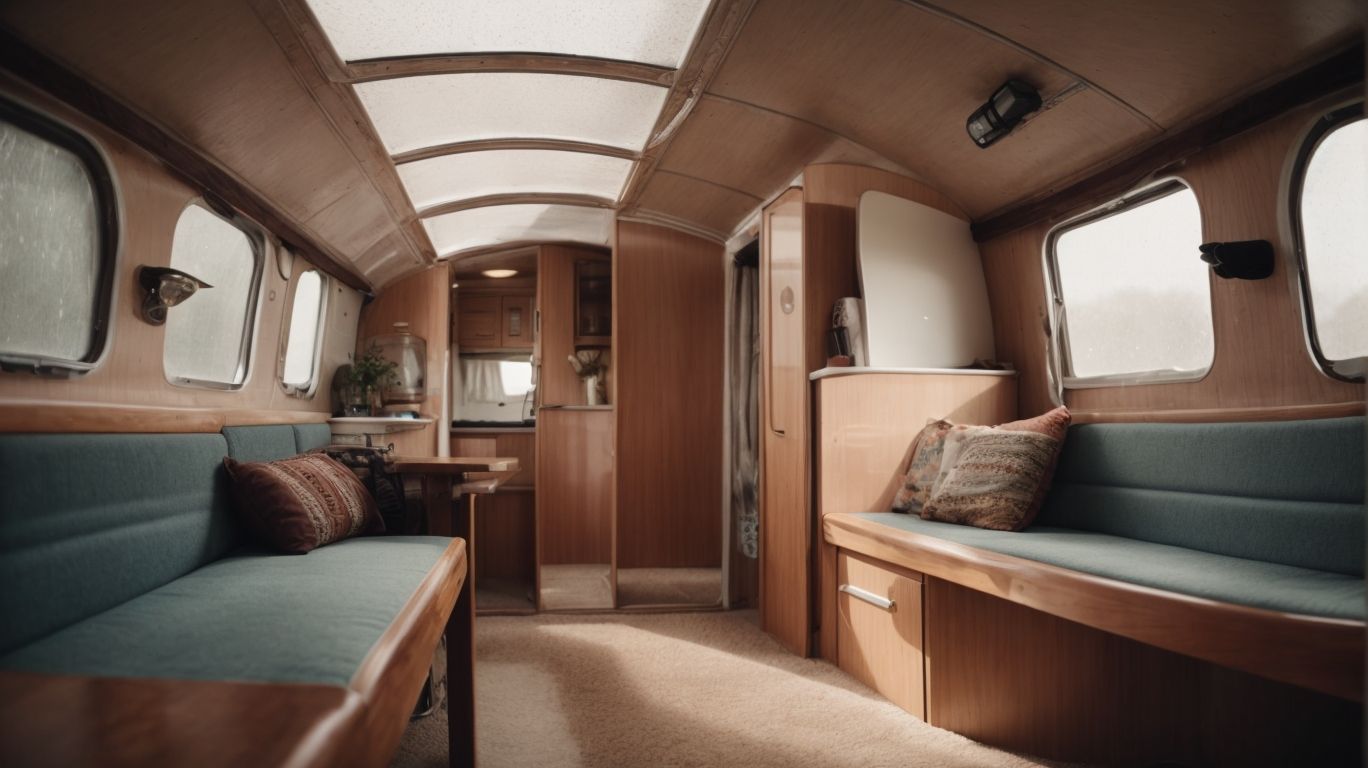
Credits: Motorcaravanning.Com – Gabriel Clark
Dealing with damp in caravans involves identifying and fixing the source of damp, drying out the affected area, repairing or replacing damaged materials, and implementing preventative measures to avoid future instances of dampness.
One of the crucial steps in tackling damp issues in caravans is to first locate the source of moisture infiltration. Common culprits include leaky windows, damaged seals, or poor ventilation causing condensation. Once the source is identified, the next phase is to efficiently dry out the affected area to prevent further damage.
Identify and Fix the Source of Damp
The first step in dealing with damp in caravans is to accurately identify and fix the source of moisture, whether it’s from leaks, water ingress, or condensation issues.
Identifying leaks is crucial and involves inspecting all exterior seals, windows, doors, and roof components for any signs of wear or damage. If leaks are left unaddressed, they can lead to water pooling inside the caravan and causing extensive damage.
- Water ingress points should be meticulously examined, paying close attention to areas prone to vulnerability such as corners, seams, and joints. Proper sealing using waterproof sealants can prevent water from seeping in.
- Condensation sources, on the other hand, can be mitigated by improving ventilation within the caravan, reducing moisture levels, and utilizing dehumidifiers where necessary.
Dry Out the Affected Area
After fixing the source of damp, it is crucial to thoroughly dry out the affected area in the caravan to prevent further moisture accumulation, mould, or mildew growth.





Drying the affected area post-repair serves as a vital step in the caravan maintenance process. The lingering moisture can lead to a plethora of issues if not properly addressed. By ensuring the complete drying of the repaired area, you not only eliminate the current moisture but also inhibit the potential growth of mould and mildew. This diligent drying process is essential to restore the caravan’s dryness and prevent any structural damage caused by prolonged exposure to dampness.
Repair or Replace Damaged Materials
Following drying, it is essential to repair or replace any damaged materials in the caravan caused by dampness to restore structural integrity and prevent further moisture-related issues.
Repairing or replacing compromised materials in the caravan post-damp treatment is crucial for maintaining the structural stability and longevity of the vehicle. When left unchecked, damp-induced damage can lead to more extensive issues such as rot, mold growth, and compromised structural strength.
By addressing these compromised materials promptly, you not only prevent ongoing structural damage but also mitigate the risk of recurrent moisture-related problems, ensuring a safer and more durable caravan for future travels. It is important to assess the extent of the damage carefully and utilize suitable materials and techniques to effectively repair or replace the affected components.
Take Preventative Measures to Avoid Future Dampness
To avoid future instances of dampness, it is crucial to implement preventative measures such as regular cleaning, moisture control products, and maintenance routines to uphold a dry and healthy caravan environment.
Regular cleaning plays a key role in preventing the buildup of dirt and mold, which can contribute to dampness. Use mild detergents and non-abrasive tools to clean surfaces effectively without causing damage. Investing in moisture control products like dehumidifiers or desiccants can help maintain optimal humidity levels inside the caravan. These products absorb excess moisture from the air, reducing the risk of condensation and mold growth.
Frequently Asked Questions
How can I prevent damp in my caravan?
Damp can easily occur in caravans due to their small size and exposure to different weather conditions. To prevent damp, make sure to properly ventilate your caravan, especially during humid or wet weather.
What are some essential tips for preventing damp in caravans?
– Regularly check for leaks and repair them immediately
– Use dehumidifiers or moisture-absorbing products
– Keep your caravan clean and free of clutter
– Use good quality insulation materials
– Avoid leaving wet clothes or towels inside the caravan
Why is it important to prevent damp in caravans?
Damp can cause serious damage to your caravan, including structural damage, mold growth, and unpleasant odors. It can also affect your health, leading to respiratory problems and allergies.





How can I improve ventilation in my caravan?
– Open windows and doors regularly, even during colder weather
– Install roof vents or air conditioning units
– Use extractor fans in the kitchen and bathroom
– Keep air vents clear and unobstructed
What should I do if I find damp in my caravan?
If you find signs of damp in your caravan, such as musty odors, mold growth, or damp patches, it’s important to take action immediately. Find and fix the source of the problem, remove any damaged materials, and thoroughly clean and dry the affected area.
Can I prevent damp in my caravan during storage?
Yes, you can prevent damp in your caravan even when it’s in storage. Make sure to thoroughly clean and dry your caravan before storing it, keep all doors and windows closed, and use moisture-absorbing products inside. It’s also a good idea to check on your caravan regularly and air it out if possible.

